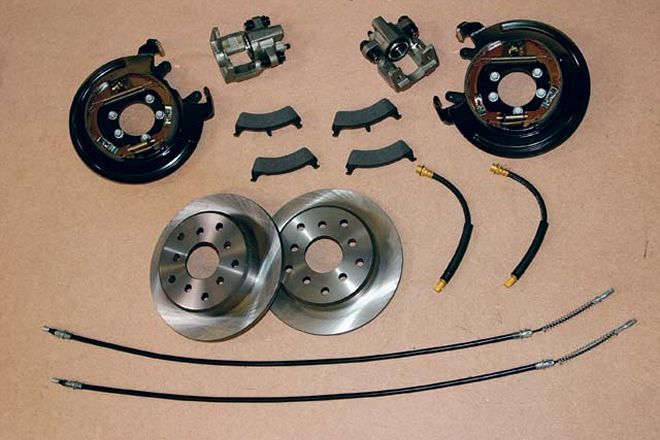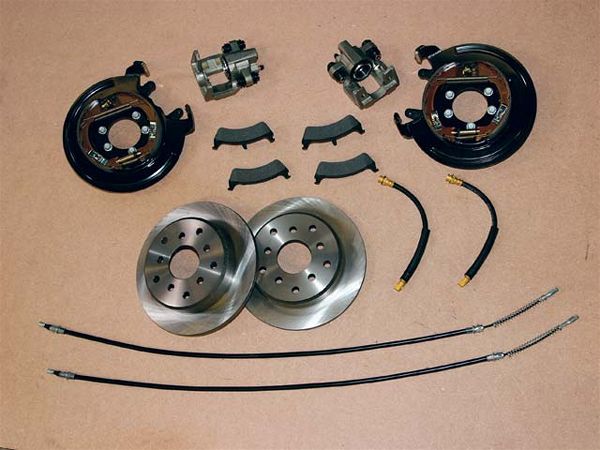

Disc brakes are a welcome upgrade to any drum-equipped 4x4, especially when you are running larger-than-stock tires. The stopping power of discs is great, and the resistance to brake fade and the fact that they still work after being wet or muddy is phenomenal. Most new 4x4s come with rear disc brakes already, but if you need an EZ upgrade to your own rig, we found the Teraflex kit one of the easiest to install. In addition, the Tera kit features an internal drum emergency brake, which is far superior in holding power than conventional disc brake grabbers. Applications are for most any '84-and-newer Jeep, and many Ford axles too, and around $550-$600 is all it takes to increase the safety of your off-road rig.
The Tera kit for our Dana 44-axled Jeep TJ came complete with new calipers, brackets, rotors, pads, and hardware, and some kits include hoses and emergency brake cables as well. The hardest part of the install is welding a tab onto the axlehousing for the flexible brake line, and some axles need to have the axle bearings replaced, but for the most part this is an EZ bolt-on brake kit well worth the investment.




